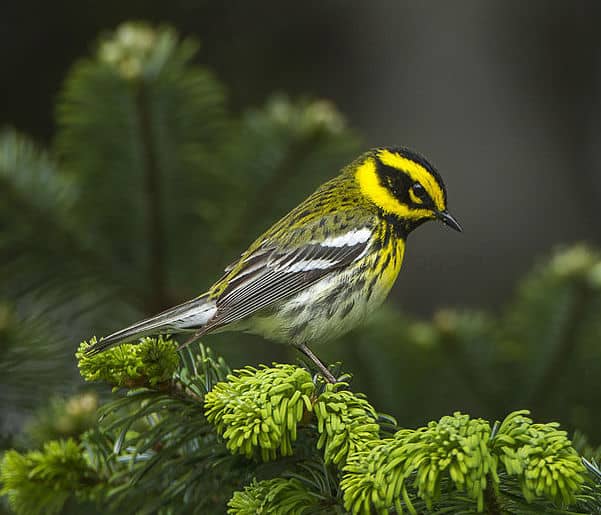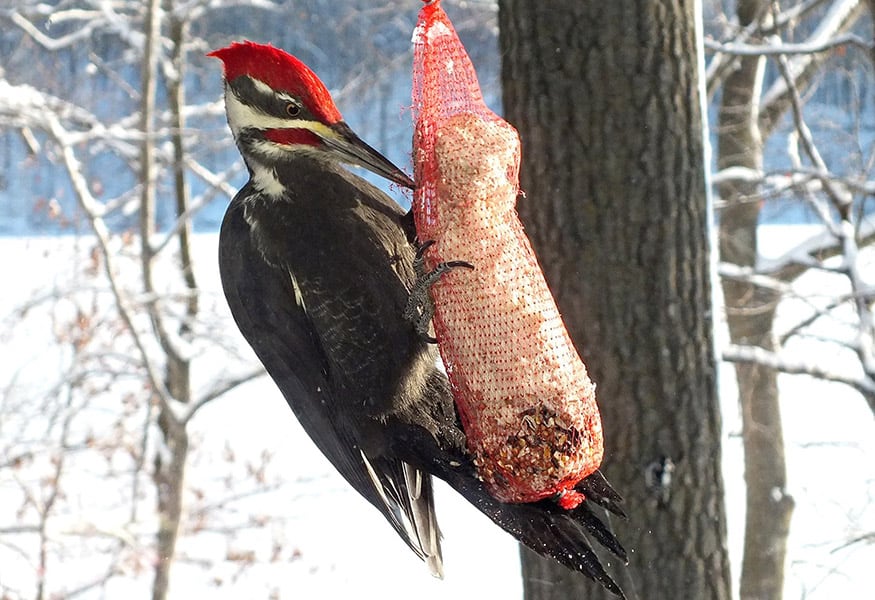Look For
An adult male has a boldly marked black-and-yellow head, with a black cheek and throat. Females have a yellow throat and gray, not black, cheeks. Both sexes have a yellow chest with heavy dark streaking, olive green on their back, and a white belly. The Townsend’s warbler is a medium-sized warbler at about 5 inches in length.
Listen For
Their song is variable, but usually contains a series of high, thin whistles, ending in buzzier notes: sleazy-sleazy-cheezy!
Find It
Prefers conifers or mixed conifer-deciduous woods in summer, and is especially fond of tall trees where they forage for food. In migration and winter (some birds do not migrate), the Townsend’s warbler may be found in other habitats. Generally, the Townsend’s warbler can be found in western North America from southern Alaska to Honduras.
Feeding Behavior
Feeds on caterpillars, moths, winged insects, and other invertebrates commonly found on coniferous and deciduous foliage. They utilize the gleaning technique to capture food. Also, Townsend’s warblers eat honeydew excreted from sap-sucking insects in low-latitude cloud forests.
Nesting Behavior
Their nests are built completely by the female between late May and mid-June and are located exclusively in coniferous trees like spruce or fir. Males guard their mates during the nest construction period. Their nests are characterized as bulky open cups. The female lays three to seven eggs and incubates them for a period of 11 to 14 days. They fledge after 9 to 11 days in which they continue to be fed by their parents for a little while.
Wow!
So how did this bird get its name? The Townsend’s warbler was among many species first collected by John Kirk Townsend during his expedition with Thomas Nuttall through the Rocky Mountains to the Pacific Coast in 1834.




